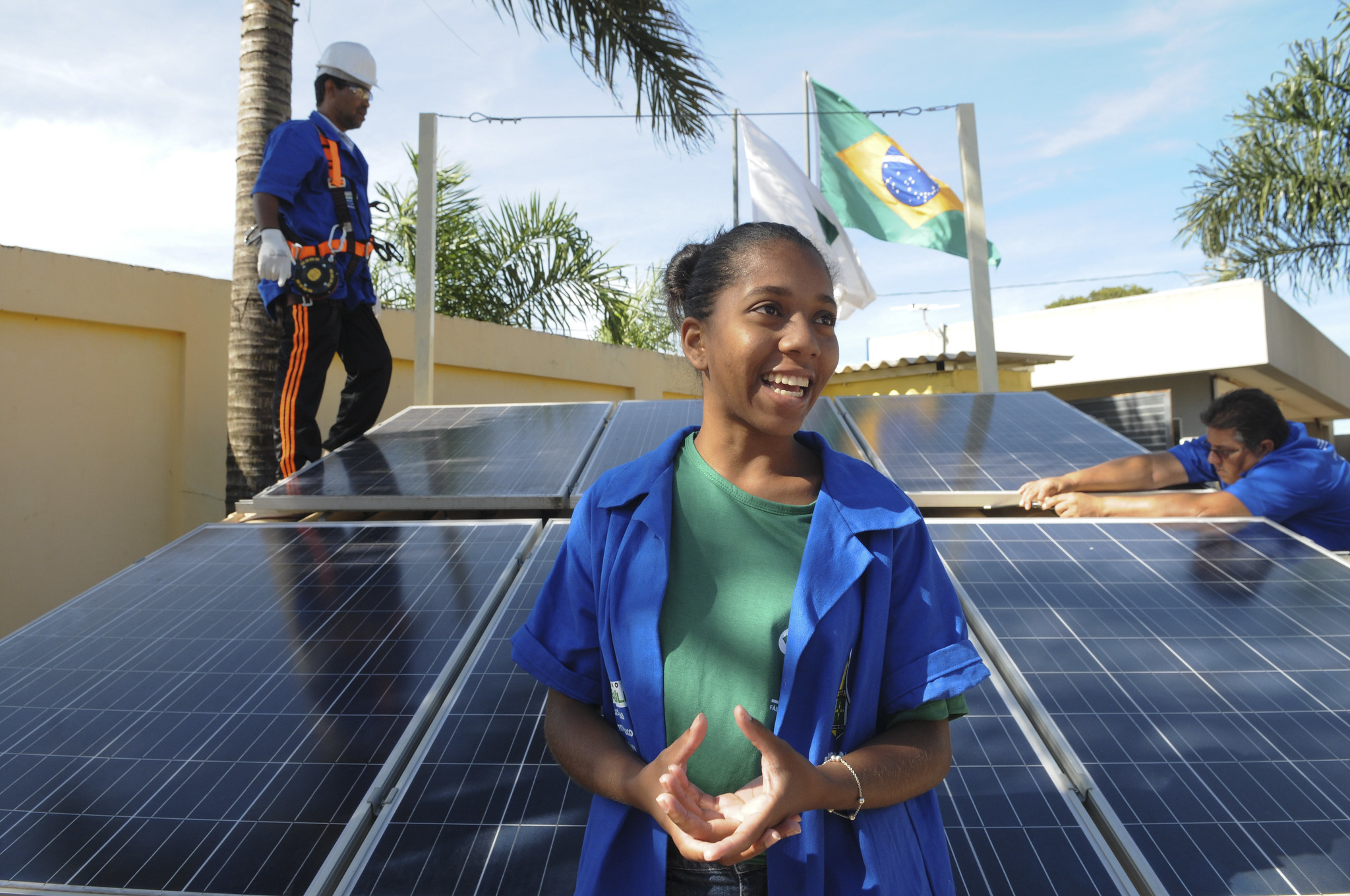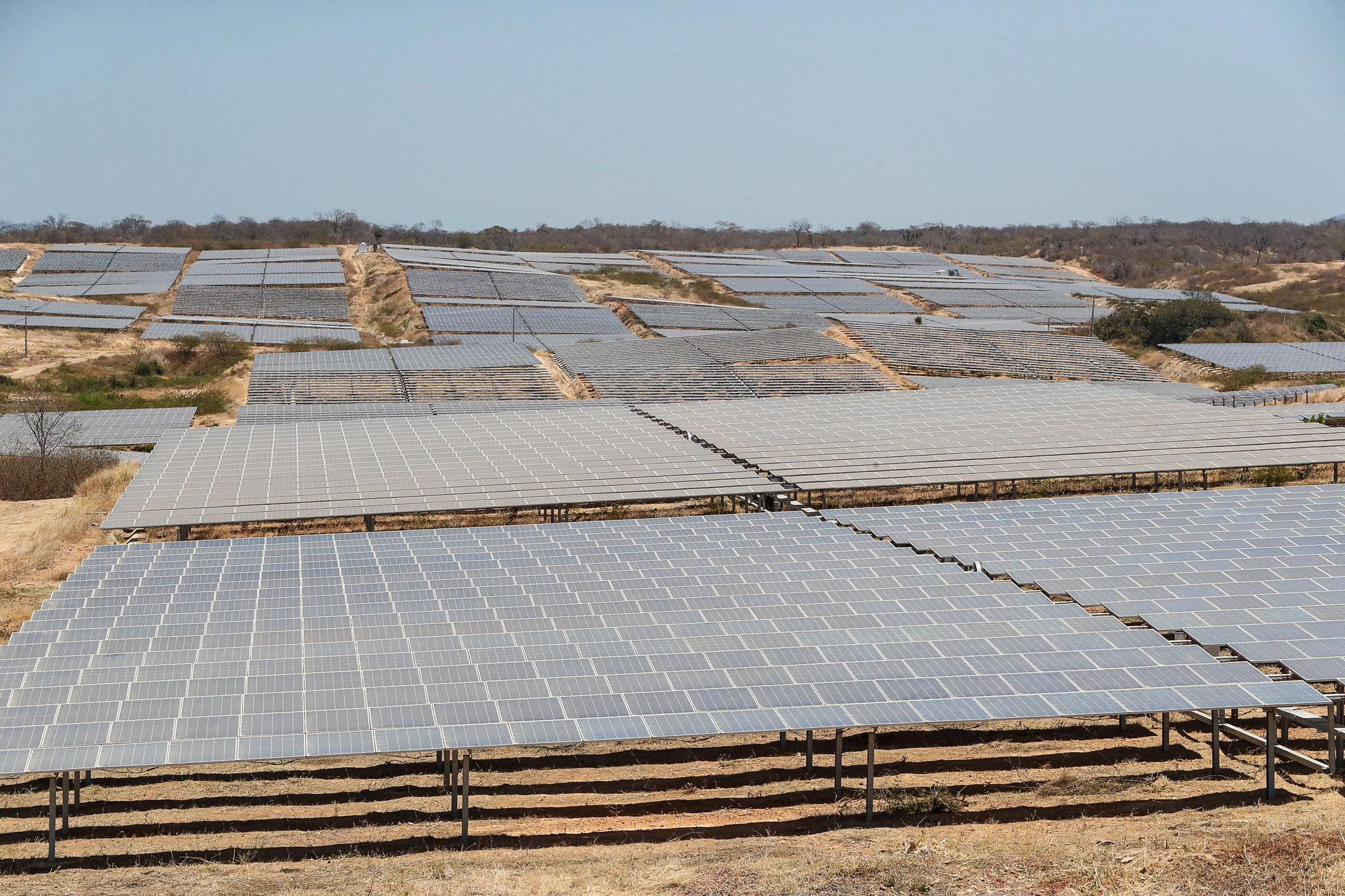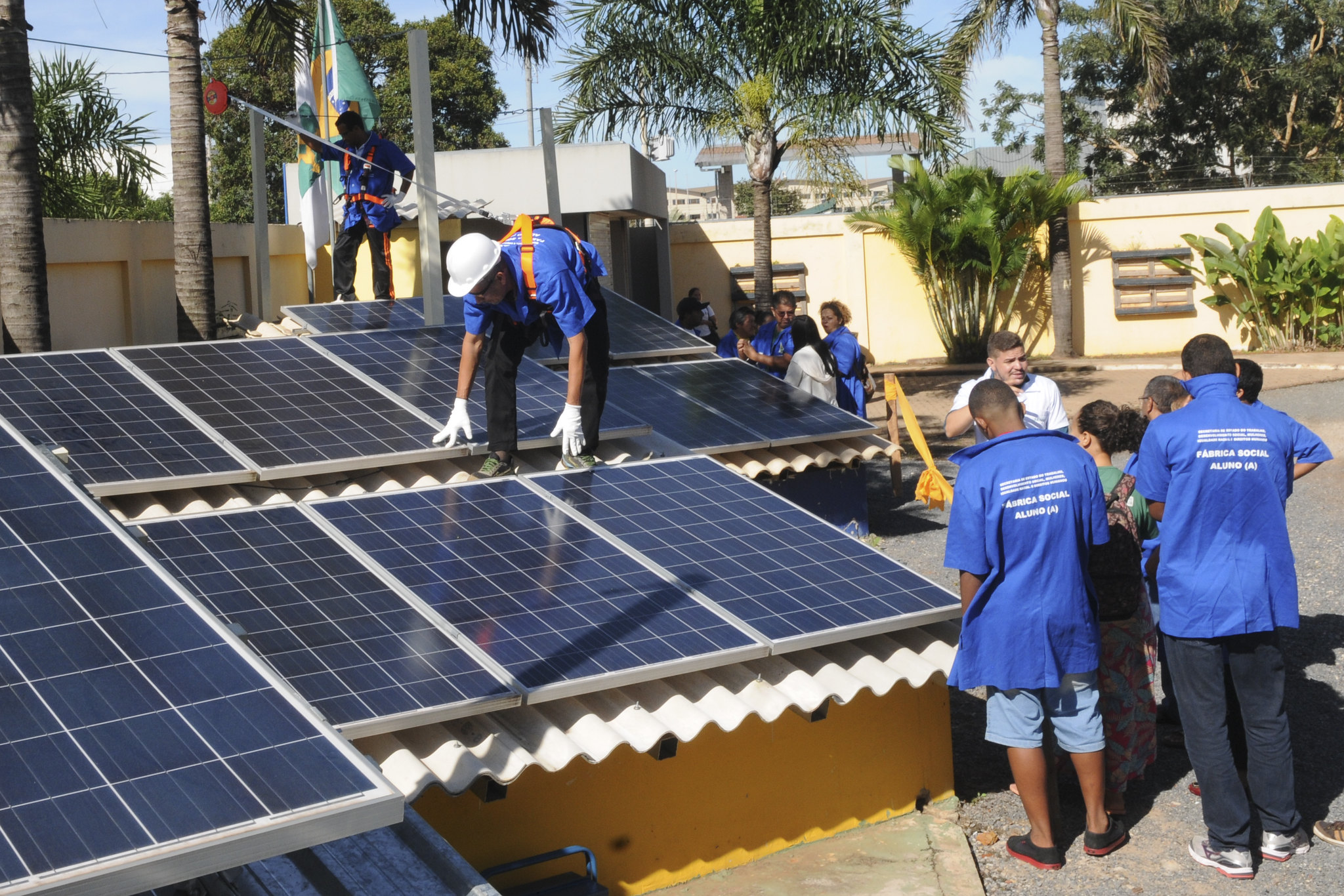Just three years ago, Brazil did not feature among the world’s top producers of solar energy, but by 2023 it had risen to sixth place in the rankings. The pace of growth has been notable: since 2022, the country has added, on average, roughly one gigawatt of solar capacity every month. Last year, solar overtook wind power to become the country’s second-largest source of electricity.
The only reason this pace has not been faster is Brazil’s sluggish economic performance, which has curbed energy demand, according to Roberto Kishinami, energy and industry manager for the Institute for Climate and Society (ICS), an environmental fund working in Brazil. Between 2019 and 2022, Brazil’s GDP grew by an annual average of 1.5%; in 2023, this figure was 2.9%. “When the sector was planned ten years ago, the expected rate was 3.5%,” he tells Dialogue Earth.
How did Brazil come to make this exponential leap in solar energy? As experts tell Dialogue Earth, this did not happen overnight: it has been the result of a decade of progress building domestic capacity, propelled by public incentives, a reduction in production costs and an expansion of ambition in meeting the challenge of climate change.
Abundant clean energy
Brazil has abundant and varied natural resources that place it in “a very advantageous position in the energy transition,” says Amaro Pereira, an energy planning professor at the Federal University of Rio de Janeiro.
For decades, the Brazilian electricity mix has been mostly clean in terms of its greenhouse gas emissions, given the country’s huge hydropower capacity. Renewable sources now account for 86.4% of its installed electricity capacity, with nearly half coming from hydroelectric plants.
Kishinami says this robust hydropower foundation acts like a “big battery” in the Brazilian electricity system, filling in the gaps created by other renewables, such as wind and solar, that fluctuate with the weather.
Although hydropower itself has felt impacts from extreme weather, with the country resorting to the use of thermoelectric plants during periods of severe drought, Brazil’s hydro-dominated electricity mix is nevertheless resilient enough to accommodate the variable nature of solar and wind power, says Pereira.
Government incentives
In 2023, the Brazilian government announced a new “growth acceleration” plan that included BRL 67 billion (USD 12.5 billion) to finance new renewable energy projects. More than half – BRL 41.5 billion – is earmarked for the construction of 196 solar power plants. This amount is double what has been invested in more than two decades under a programme with a similar purpose.
Carlos Dornellas, technical and regulatory director of Absolar, Brazil’s main solar industry association, tells Dialogue Earth that during the past decade, the government held auctions to boost centralised electricity generation through large solar plants, which became regulated in the 1990s.
Allied to this, in 2012 the country gave its authorisation for “distributed” generation – the production of energy on a smaller scale, close to the point of consumption. This format now accounts for almost 70% of solar energy in Brazil, and is the main driver of solar’s growth in the country.
Until recently, individual users of solar power could sell surplus energy generated to the national grid. To encourage solar development, every watt injected by the consumer to the grid was fully compensated in their electricity bills. However, the sector’s growth has necessitated a gradual reduction of these incentives: a new legal framework that came into force in January 2022 reduced the proportion of distributed solar generation that can be sold to the grid.
According to Pereira, this change “generated concern that [distributed energy] would lose its economic attractiveness, so many people rushed to invest”; those who had installed a distributed generation system by January 2023 did not have to follow the terms of the new legislation.
“In 2022, there was higher-than-normal growth [in the sector] because of this,” explains Pereira.
Despite these recent concerns, however, Pereira says that solar power remains attractive in the country – and urgent for the planet.
Climate targets or cost savings?
During last year’s COP28 climate change conference in Dubai, 118 countries, including Brazil, pledged to collectively triple global renewable energy capacity by 2030.
Global pressures to increase ambition for tackling climate change have contributed to the rise of solar power, but according to Pereira, the main factor accelerating the market is the increasing affordability of production: “Technological development has resulted in lower costs, and this favours the expansion of solar energy.”
This cost shrinkage has been brought about mainly by China, which accounts for around 80% of manufacturing capacity in the solar sector.
In recent years, solar panels have been exempted from import taxes in Brazil – a subsidy that was revoked this year, as a 10.8% tax was introduced. The exemption had helped to make solar equipment cheaper to source from China than domestically, and contributed to Brazil emerging as the second-largest importer of Chinese solar panels. Dornellas says almost all of Brazil’s photovoltaic modules and inverters (which convert solar energy for use in electronic devices) are bought from Chinese companies.
According to an analysis by the energy research company Wood Mackenzie, these imports became even more advantageous in 2023, when the cost of manufacturing solar panels in China plummeted by 42% amid production increases. As a result, the price of these panels on the Brazilian market fell by a similar amount last year, according to a survey by the Portal Solar energy company.
On the other hand, some commentators say that the ease of accessing Chinese equipment has presented a barrier to the development of solar manufacturing in Brazil. “There is an intention to develop a national industry, but it won’t be up and running in a short space of time,” says Dornellas. “Today, what we have in Brazil is still of lower quality and higher price.”
Chinese power boosts
Just over a decade ago, China turned its attention to the renewable industry with the aim, among others, of solving its air pollution crisis. Bolstered by government support and incentives, the country’s solar industry grew quickly to lead the global market: by 2012, it already produced 40% of the photovoltaic cells used in solar panels around the world. Latin America and the Caribbean, with which China already had strong trade ties, became important destinations for these investments.
Marco Aurélio Mendonça, a researcher at the Institute for Applied Economic Research (Ipea), says Chinese investments in Latin America and the Caribbean have been in line with energy bottlenecks in the region, with electricity infrastructure deficiencies plaguing the region, including in Brazil.
Between 2019 and 2022, the capacity of solar projects operated or under construction by Chinese companies in Latin America more than tripled, rising from 1.4 GW to 4.9 GW. Moreover, they are investing in the entire production chain, says Dornellas: Trina Solar and JA Solar import and distribute solar panels and other equipment; China Three Gorges Corporation and China General Nuclear Power Group are investing in the construction of power plants; the electric car manufacturer BYD now also produces solar modules at its factory in Campinas, São Paulo state; and State Grid will build a 1,513km transmission line to boost renewable energy in north-east Brazil.
Today, the north-east leads the country’s solar market. According to the Brazilian National Electric Energy Agency (Aneel), the region has accumulated more than 60% of the total power solar capacity that is authorised to operate in the national system (excluding distributed generation). As well as having favourable climatic conditions, the region has come out ahead in this race by adopting various incentive policies, mainly tax-related, in the region’s states, says Dornellas.
Transition needs to be fair and inclusive
The North-east Power Plan, a joint initiative by four Brazilian environmental organisations, estimates that renewable energies could generate 2 million new jobs in the region, which currently has the lowest per capita income in the country.
“It has huge potential for generating income,” says Fabiana Couto, the group’s political organiser. “But we need to invest in training so that this income generation is effective.” The jobs should also be filled by local people, she stresses.
Couto defends distributed energy generation run by co-operatives. She says they can bring income to communities, as well as solving power distribution bottlenecks in remote locations. But she says government incentives are needed to boost these initiatives, which are still expensive for poor populations.
In a remote area of the state of Paraíba, the Bem Viver Cooperative adopted solar generation in January 2023, with the support of non-governmental organisations. Each of the 22 members receives a quota of energy, used for both basic consumption and powering family farming operations. The system even supports the storage of rainwater that collects upon the rooftop solar panels.
The expansion of solar energy also needs to be more democratic, argues Couto. At the moment, there are many communities surrounded by solar power plants that do not have access to the energy they generate. The ideal format for solar parks, says the activist, would be to install distributed systems next to them to serve local populations as well.
In January, a broad network of community organisations and associations whose north-eastern lands have been impacted by renewable power plants called for a fairer and more inclusive energy transition. An accompanying document, “Social and Environmental Safeguards for Renewable Energy”, lists more than a hundred mechanisms and protection measures that could achieve this.
These safeguards include: prior consultation with communities; ecological-economic zoning, to avoid the overlap of power plants with protected areas or traditional communities; and fairer criteria for the leasing of land by companies.
“The amount paid for these lands is a problem in the contracts, which have been made in a very unequal way,” says Couto, whose organisation helped draft the document.
The installation of solar energy could also be a solution to tackle the energy imbalance in the Amazon region. The Energy and Environment Institute (Iema) estimates that 3 million residents of the Legal Amazon (the administrative region contained by the Amazon Basin) are not connected to the national electricity system, and around 1 million do not have access to continuous electricity. Many of these people must resort to the use of fossil fuels, such as diesel-powered generators.
Solar energy will bring human development, promoting economic activities that serve as another option to mining and deforestationRicardo Baitelo, project consultant, the Energy and Environment Institute (Iema)
The federal Light for All programme, relaunched in August 2023, aims to serve 226,000 new consumer units in the Legal Amazon – homes, schools, health centres and community centres, among others. According to Couto, decentralised solar energy is the most viable option for the most remote regions and should be prioritised by Light for All. Since 2003, BRL 24 billion has been invested into the programme, with a further BRL 2.5 billion planned for 2024.
In the Legal Amazon, universal access to solar energy will require up to BRL 38 billion, according to Iema estimates. “This will bring a return for human development in this region, promoting economic activities that serve as another option to predatory ones, such as mining and deforestation,” says Ricardo Baitelo, a project consultant for Iema.











